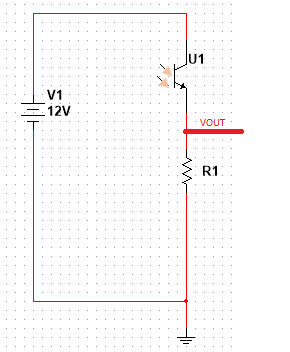I decided to ask here for help, I am still new at electronics, I have been trying to figure out the definitions and graphs of this phototransistor, the PT1302 (datasheet here), my doubt is how can I calculate the value of a resistor below the emitter, the \$V_\text{out}\$ is connected to an Op-Amp, (from which I have successfully calculated all the resistors and values for components). From what I read, the given formula for the resistor in this particular arrangement is:
I know that the \$0.6V\$ correspond to the \$V_\text{CE}\$/\$V_\text{CEO}\$ in the datasheet, but I don't know if I am missing a formula to calculate Ic or the current or gain through collector to emitter.
And here is the matter, how can I compute \$R_1\$ or \$I_\text{C}\$ for the formula?.

if I am not wrong \$R_1\$ is $$ R_1=\frac{V_\text{CC}-V_\text{CE}}{I_\text{C}}. \label{1}\tag{1} $$ I would really appreciate any feedback, comment, observation or example.

